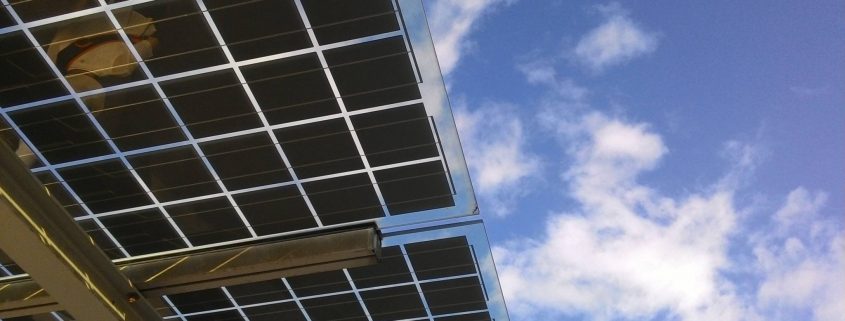Renewable Energy 101: Get to Know Solar
The first thing to come to mind when the words “clean energy” are used is solar power. Solar power simply means taking the energy emitted by the sun and converting it to electricity through the use of solar panels. Harnessing the power of the sun was one of the first ways people considered as a power alternative to the traditional power sources derived from coal and natural gas for the purposes of lowering greenhouse gases and our dependence on the finite stores of fossil fuels.
The sun’s rays produce two possible power alternatives to fossil fuels: heat and light.
Heat is best used in thermal systems reliant on temperature to run. The heat produces both hot water and hot air for commercial and residential heating, and can also be used to generate power through steam or sterling engines.
Light is used in photovoltaic (photo = light, voltaic = produces voltage) systems, which convert the light to energy. This conversion is the main area industry leaders are turning to for advancement of the solar power industry today.
As with wind energy, the investment in solar power is heavy upfront.
However, advancements in the technology used to produce more efficient solar panels, coupled with the current tax incentives, energy bill cost savings, and increased market value of the property once panels are installed, the cost is an investment worth considering.
According to The Appraisal Journal, the selling price of homes has increased by more than $20 for every dollar decreased on the energy bills of the properties. Additionally, studies in California through Clean Power Research show over the lifetime of a solar energy system (30 years), homeowners will save an average of $40,000, and the cost of installation of a solar energy system has come down 75% since 2009. The national average purchase and installation price of a solar energy system is between $12,000 and $20,000, with a 25-year warranty. (Source) Maintenance, once the system is installed, basically comes down to cleaning the panels once a year.
Considering the sun emits enough energy in one hour to power the global population for a year, solar energy is perhaps the most obvious way forward in the initiative to replace fossil fuels and our dependence on them. A new report by the US Department of Energy (source) states that solar power employed 43% of the Electric Power Generation sector’s workforce in 2016, while all three fossil fuels (coal, gas, and oil) combined for only 22%. Slightly less than 374,000 people were employed in solar energy, while fossil fuel generation had a workforce of slightly more than 187,000 jobs. The boom in the solar workforce can be associated with construction work focused on expanding solar power. Coal employment has fallen 53% over the last decade, while during the same period, electricity generation from natural gas has increased 33% and solar generation has expanded 5000%.
Solar energy is rapidly becoming the future when it comes to powering our increasingly electronic lives.








